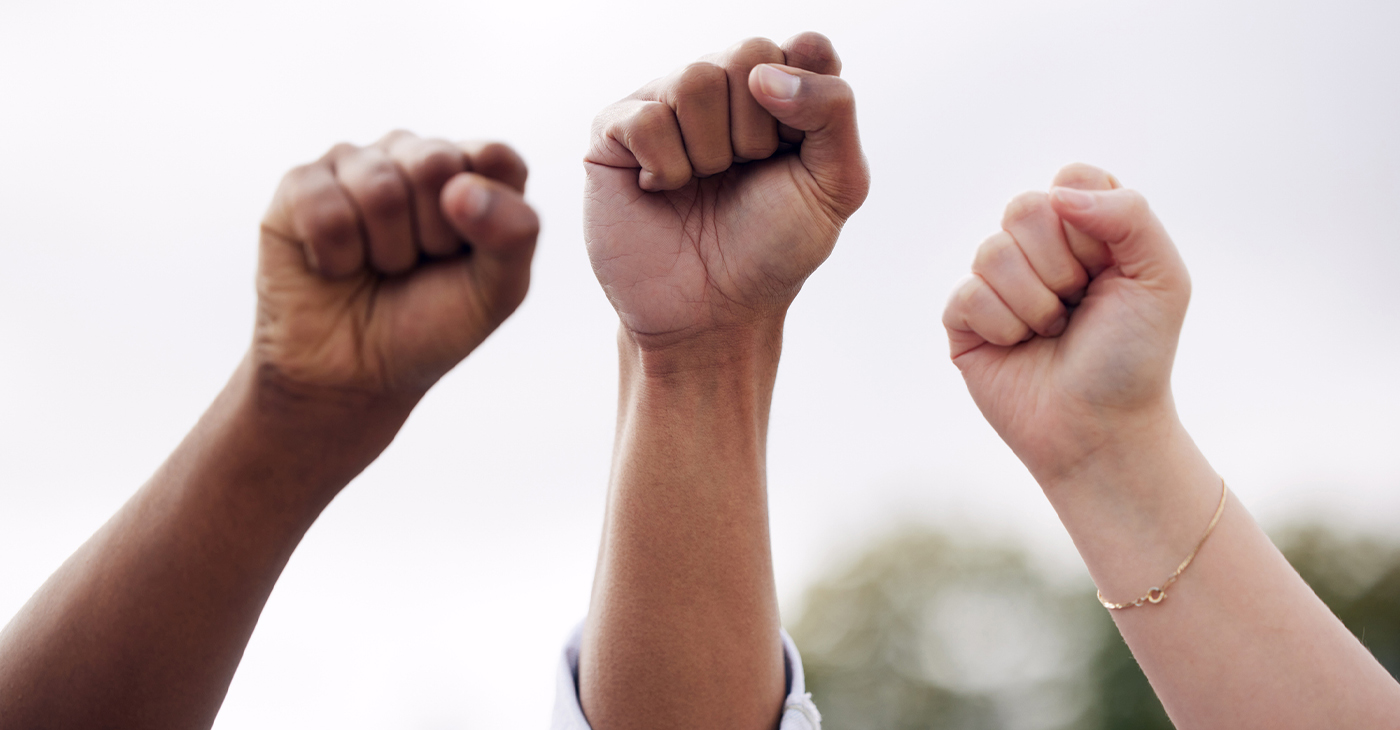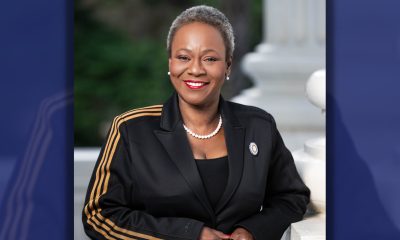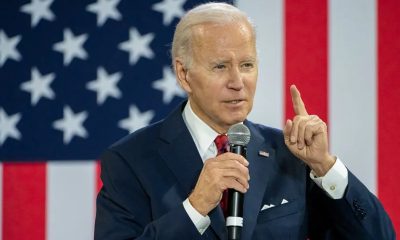Commentary
COMMENTARY: Wisconsin Must Shift Youth Justice Policy to Promote Transformative Change
MILWAUKEE COURIER — As Wisconsin looks to establish a new correctional system for youth, it is incumbent upon us to act with great urgency to respond to the immediate crisis at Lincoln Hills and Copper Lake Schools. We must take deliberate action to promote youth justice system reforms that are most effective, safe, sustainable and support proper care and treatment of our youth.
By Milwaukee Courier
As Wisconsin looks to establish a new correctional system for youth, it is incumbent upon us to act with great urgency to respond to the immediate crisis at Lincoln Hills and Copper Lake Schools. We must take deliberate action to promote youth justice system reforms that are most effective, safe, sustainable and support proper care and treatment of our youth.
While Act 185 has many merits, it doesn’t go far enough. Act 185, which this administration inherited, only marginally improves the status quo while a paradigm shift is needed. Instead of pushing for transformational change, it aims to improve conditions of confinement without reducing the number of youth Wisconsin places in locked custody or the state’s carceral footprint.
In their 2011 publication, No Place for Kids: The Case for Reducing Juvenile Incarceration, the Annie E. Casey Foundation outlined six failings of America’s juvenile corrections facilities. It stated that juvenile corrections facilities are dangerous, ineffective, unnecessary, obsolete, wasteful and inadequate. Given the poor outcomes of Lincoln Hills and Copper Lake, it would be fair to similarly categorize Wisconsin’s juvenile corrections facilities by these pitfalls.

Lincoln Hills School (LHS)
In response to these failings, the Casey Foundation identified six priorities including limiting the eligibility for correctional placements, investing in promising non-residential alternatives, changing the financial incentives, adopting best practice reforms for managing youth offenders, replacing large institutions with small, treatment-oriented facilities, and using data to hold systems accountable. The State of Missouri and Wayne County, Michigan (Detroit) are examples of jurisdictions who used these strategies to eliminate state juvenile correctional facilities and realize remarkable reductions of youth in secure care facilities.
Reports by the Center for Children’s Law and Policy and Columbia University Justice Lab have outlined the successes of the Close to Home initiative implemented in New York City. Since 2011, the model successfully reduced the need for secure care for youth and lowered youth crime rates when compared to the rest of New York State. Other jurisdictions like Philadelphia and Houston are looking to learn from the Close to Home model, as they respond to the failures of their large correctional facilities. The success of models like Close to Home have now prompted over 50 justice system leaders to sign a statement calling for the closure of all youth prisons and placing these youth at home with rigorous community programming, or in small, home-like facilities close to the youth’s families.
If revisions to the DOC 347 were made, Milwaukee County could develop smaller, more home-like secure settings for the majority of youth at Lincoln Hills and Copper Lake and renovate two pods in the Detention Center to serve the youth in need of additional internal structure and security. Only a small number of the youth committed to restrictive custodial care actually require the type of Wisconsin Must Shift Youth Justice Policy to Promote Transformative Change internal security available within a detention center or correctional facility. We believe that such a plan could result in significant savings and reduce the overall institutional footprint, while providing a more trauma-informed and engaging treatment environment for most youth.
Wisconsin has the second highest rate of disparity in confinement between white and black youth in the nation. Black youth are 15 times more likely than white youth to be confined in our state. This is not only true in Milwaukee. It is true across our state. We cannot incarcerate our way out the problems our youth are facing. We must find a better way, and our best opportunity is now.
It is critical to strengthen the network of providers, mentors, coaches, employers, teachers, and advocates who look like and have similar life experiences as our youth. Programs like Running Rebels help young people be successful and lead healthy, prosocial lives. However, it is imperative that we continue to expand the capacity for mentors with lived experience, vocational training, alternative educational, recreational resources and socioeconomic advancement opportunities for underserved youth and families in Milwaukee.
The history of juvenile prison failures spanning decades and across over 30 states, territories, and the District of Columbia, coupled with our own tragic and troubling experiences within Lincoln Hills and Copper Lake Schools more than justify the call for the closing of all youth prisons. To that end, the state should eliminate “Type I” facilities and build regional Secure Residential programs. If we aspire to establish a new, therapeutic treatment culture in our youth justice system, we must understand that words matter. We must do everything within our power to assure that our history of abusive institutions does not repeat itself and we must do so at this critical juncture.
We believe that these proposed changes will position our state to continue to pursue transformative improvements. It is only through this pursuit that we can establish an effective, sustainable and fiscally responsible youth justice system. Wisconsin should not waste this tremendous opportunity to redefine who we are as a state when it comes to youth justice.
This article originally appeared in the Milwaukee Courier.
Commentary
Opinion: Lessons for Current Student Protesters From a San Francisco State Strike Veteran
How the nation’s first College of Ethnic studies came about, bringing together Latino, African American and Asian American disciplines may offer some clues as to how to ease the current turmoil on American college campuses over the Israel-Hamas war. After the deadline passed to end the Columbia University encampment by 2 p.m. Monday, student protesters blockaded and occupied Hamilton Hall in a symbolic move early Tuesday morning. Protesters did the same in 1968.

By Emil Guillermo
How the nation’s first College of Ethnic studies came about, bringing together Latino, African American and Asian American disciplines may offer some clues as to how to ease the current turmoil on American college campuses over the Israel-Hamas war.
After the deadline passed to end the Columbia University encampment by 2 p.m. Monday, student protesters blockaded and occupied Hamilton Hall in a symbolic move early Tuesday morning.
Protesters did the same in 1968.
That made me think of San Francisco State University, 1968.
The news was filled with call backs to practically every student protest in the past six decades as arrests mounted into hundreds on nearly two dozen campuses around the country.
In 1970, the protests at Kent State were over the Vietnam War. Ohio National Guardsmen came in, opened fire, and killed four students.
Less than two weeks later that year, civil rights activists outside a dormitory at Jackson State were confronted by armed police. Two African American students were killed, twelve injured.
But again, I didn’t hear anyone mention San Francisco State University, 1968.
That protest addressed all the issues of the day and more. The student strike at SFSU was against the Vietnam war.
That final goal was eventually achieved, but there was violence, sparked mostly by “outside agitators,” who were confronted by police.
“People used the term ‘off the pigs’ but it was more rally rhetoric than a call to action (to actually kill police),” said Daniel Phil Gonzales, who was one of the strikers in 1968.
Gonzales, known as the go-to resource among Filipino American scholars for decades, went on to teach at what was the positive outcome of the strike, San Francisco State University’s College of Ethnic Studies. It’s believed to be the first of its kind in the nation. Gonzales recently retired after more than 50 years as professor.
As for today’s protests, Gonzales is dismayed that the students have constantly dealt with charges of antisemitism.
“It stymies conversation and encourages further polarization and the possibility of violent confrontation,” he said. “You’re going to be labeled pro-Hamas or pro-terrorist.”
That’s happening now. But we forget we are dealing not with Hamas proxies. We are dealing with students.
Gonzales said that was a key lesson at SF State’s strike. The main coalition driving the strike was aided by self-policing from inside of the movement. “That’s very difficult to maintain. Once you start this kind of activity, you don’t know who’s going to join,” he said.
Gonzales believes that in the current situation, there is a patch of humanity, common ground, where one can be both pro-Palestine and pro-Israel. He said it’s made difficult if you stand against the belligerent policies of Benjamin Netanyahu. In that case, you’re likely to be labeled antisemitic.
Despite that, Gonzales is in solidarity with the protesters and the people of Gaza, generally. Not Hamas. And he sees how most of the young people protesting are in shock at what he called the “duration of the absolute inhumane kind of persecution and prosecution of the Palestinians carried out by the Israeli government.”
As a survivor of campus protest decades ago, Gonzales offered some advice to the student protesters of 2024.
“You have to have a definable goal, but right now the path to that goal is unclear,” he said.
About the Author
Emil Guillermo is a journalist and commentator. A veteran newsman in TV and print, he is a former host of NPR’s “All Things Considered.”
Activism
Oakland Post: Week of May 1 – 7, 2024
The printed Weekly Edition of the Oakland Post: Week of May 1 – 7, 2024

To enlarge your view of this issue, use the slider, magnifying glass icon or full page icon in the lower right corner of the browser window. ![]()
Activism
Oakland Post: Week of April 24 – 30, 2024
The printed Weekly Edition of the Oakland Post: Week of April 24 – 30, 2024

To enlarge your view of this issue, use the slider, magnifying glass icon or full page icon in the lower right corner of the browser window. ![]()
-

 Community3 weeks ago
Community3 weeks agoFinancial Assistance Bill for Descendants of Enslaved Persons to Help Them Purchase, Own, or Maintain a Home
-

 Business3 weeks ago
Business3 weeks agoV.P. Kamala Harris: Americans With Criminal Records Will Soon Be Eligible for SBA Loans
-

 Activism3 weeks ago
Activism3 weeks agoOakland Post: Week of April 10 – 16, 2024
-

 Community3 weeks ago
Community3 weeks agoAG Bonta Says Oakland School Leaders Should Comply with State Laws to Avoid ‘Disparate Harm’ When Closing or Merging Schools
-

 Activism1 week ago
Activism1 week agoOakland Post: Week of April 24 – 30, 2024
-

 Community2 weeks ago
Community2 weeks agoRichmond Nonprofit Helps Ex-Felons Get Back on Their Feet
-

 Community2 weeks ago
Community2 weeks agoOakland WNBA Player to be Inducted Into Hall of Fame
-

 Community2 weeks ago
Community2 weeks agoRPAL to Rename Technology Center for Retired Police Captain Arthur Lee Johnson























































